

Don’t be a victim of identity theft. Learn how to stop hackers from stealing your information with keyloggers.
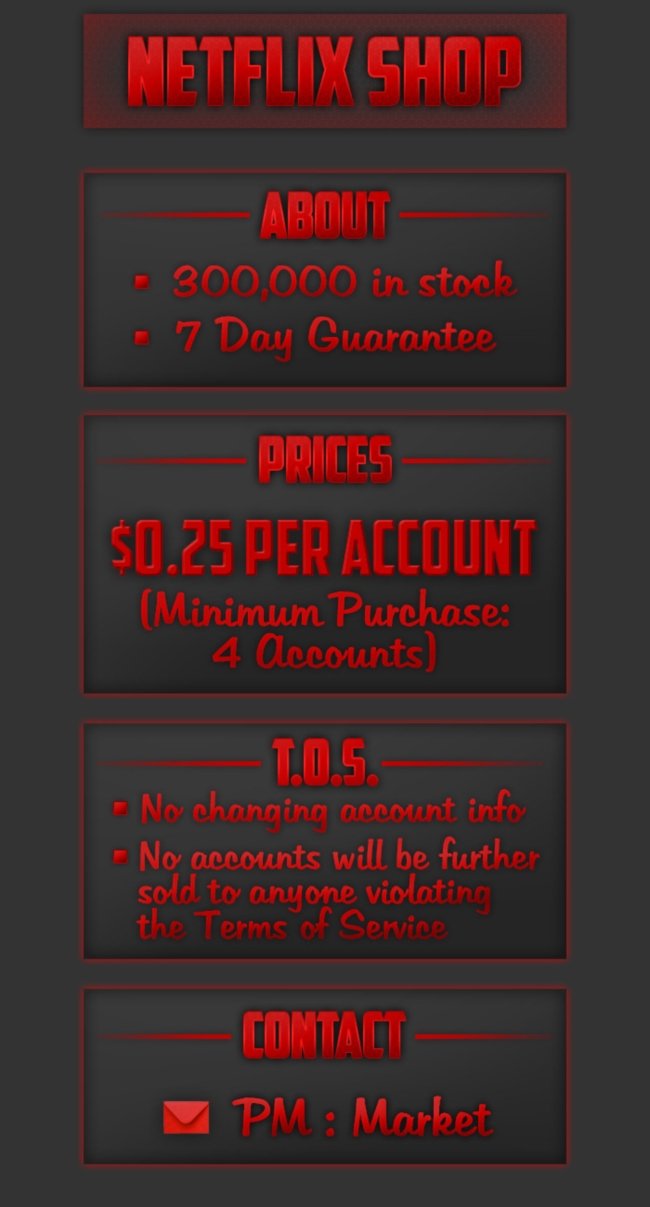
Gaming information is being hacked just for the game points or screen name. Twitter accounts are being hijacked just for the account name or followers. These creeps will steal just about anything. They use webcams to capture incriminating images or video and use it to blackmail the victim. Just the fact that there may be some creepy person out there watching and listening to everything I do is enough for me to take action. I’ve read they can and do monitor for weeks or even months before they’re satisfied and move along with all your data. I would think that that must apply to corporations though. I can’t see the added benefit of monitoring a household for that long.

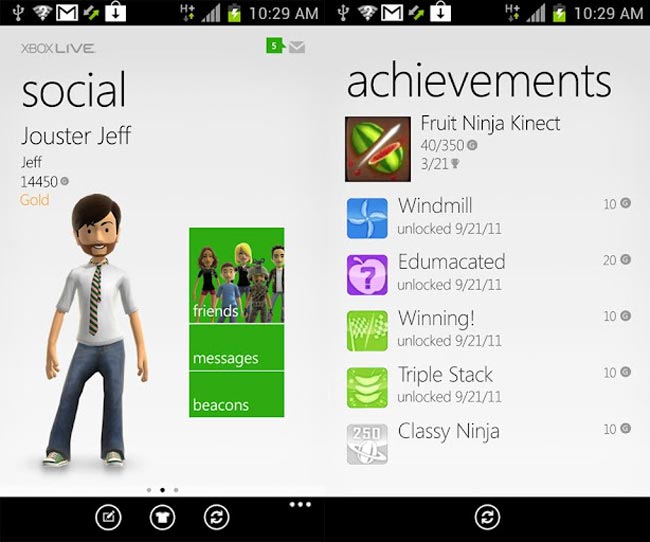
Keyloggers in their own right have legitimate uses as well. IE: It can be used as a parenting application to monitor their child’s usage on the internet or by businesses to monitor employees. However, for the sake of this blog, I am referring to the bad malware type of Keyloggers. The wiki on keystroke logging can be found here.
Keyloggers come in a variety of flavors. Some can be detected by the simplest of anti-virus software and some may not be detected by anything shy of professional

I was leaning in that direction until I found out the anti-keylogger software I was looking into was no longer free for the full version of the software. KeyScrambler still has a free version but it only blocks stuff you type into your browser (which for me would cover most of what I would consider sensitive data). They have two pay versions of the software, KeyScrambler Professional for $29.99 for up to 3 PCs and KeyScrambler Premium for $44.99 for up to 3 PCs. Pro covers more applications than the free version and Premium covers more applications than the Pro version. They provide encryption on a per-application basis rather than just encrypting everything out of the keyboard which would make more sense but I guess it wouldn’t be as profitable. Go here to compare the different versions. Depending on your needs you too may find the free version to be satisfactory. However, they do cover a lot of additional applications with the pro and premium. I didn’t find a trial version of the software so I recommend installing the free version to see it in use before making the decision on whether or not to purchase.
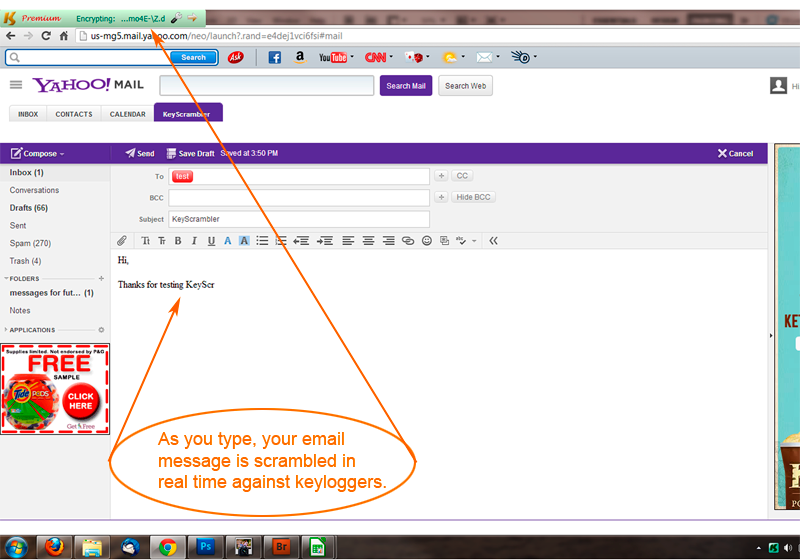
1. Zemana is priced at $34.95 for 1 year with discounted pricing for 2 and 3 years and/or 3 or 5 PCs. They offer a free 15-day trial if you want to check it out. They offer a scanner function and anti-ransomware protection. The scanner has two modes – a smart scan and a deep scan. I ran the deep scan and it found 5 pups’ (potentially unwanted programs) that were in my downloads folder for over a year and were never picked up by the plethora of anti-malware/virus software I’ve researched. This was impressive. The anti-ransomware feature also was a nice inclusion as this is normally offered as a separate program by itself. They also include an anti-screenshot feature, Webcam protection
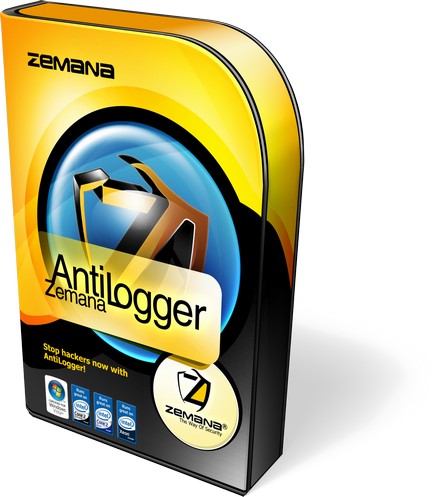
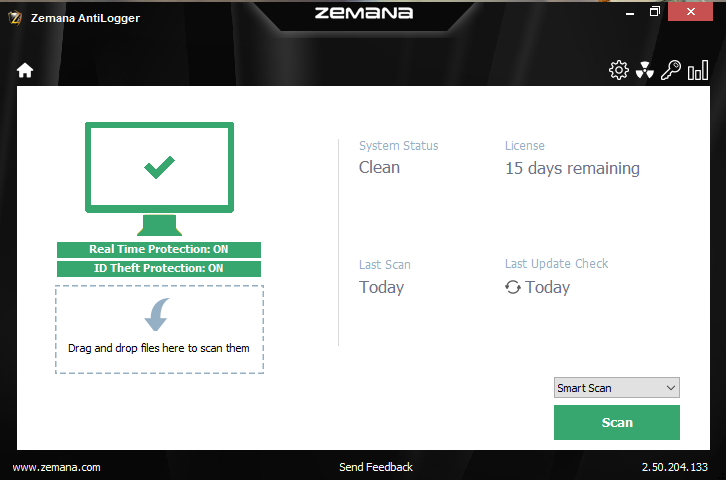
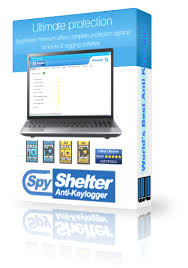
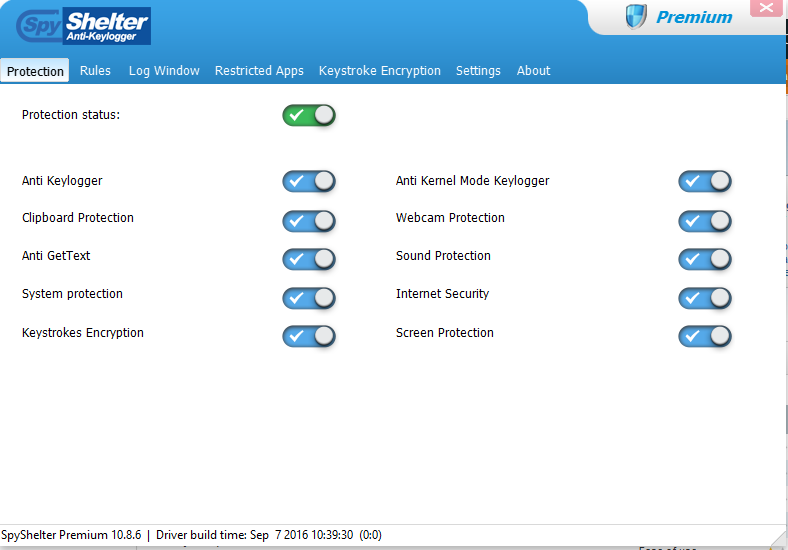
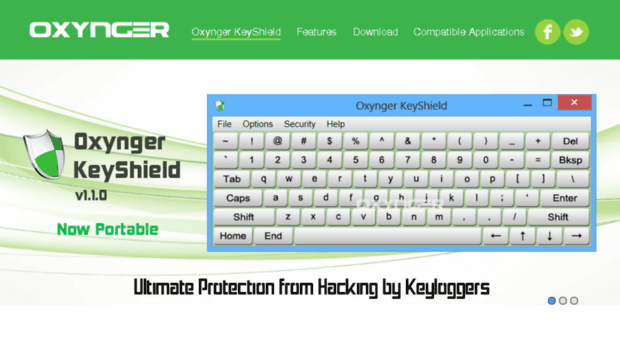
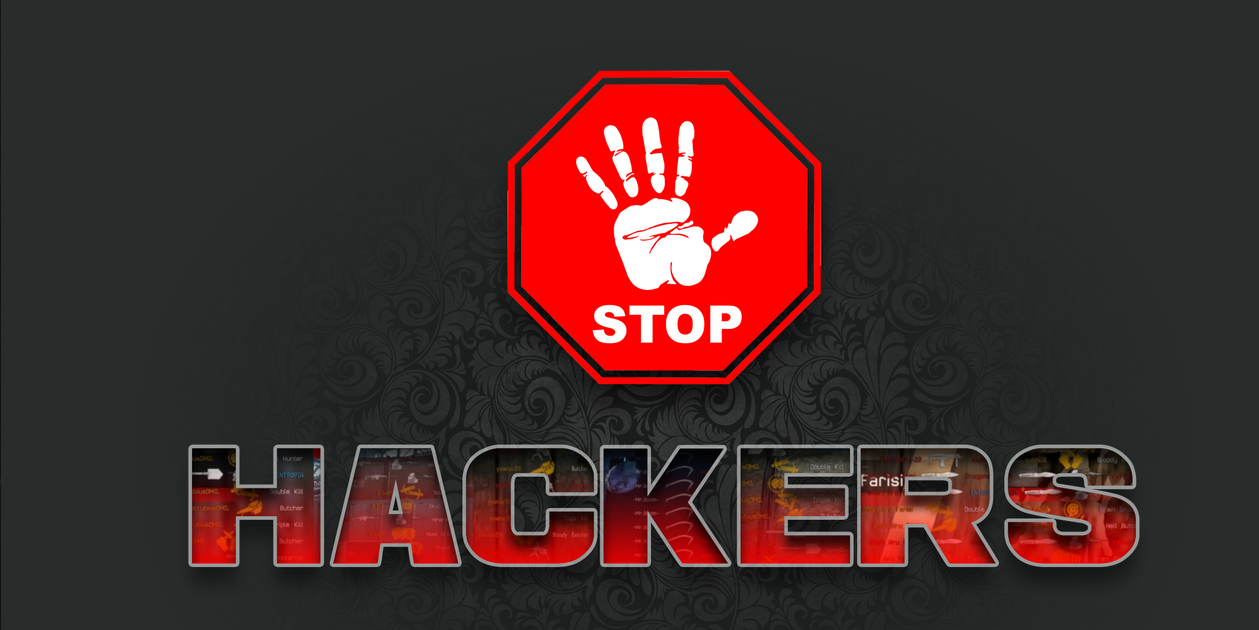
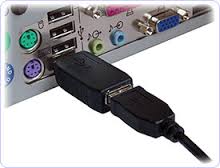
Since my goal is to cover all aspects of Network Security I thought I should briefly mention hardware keyloggers. These are physical devices placed between your keyboard and your computer. They also come as a USB dongle device meant to sniff out the signals from a wireless keyboard. A quick physical inspection will rule those out though. They also come in stealthier forms as circuits that are mounted in either the keyboard or inside the computer. These hardware devices are really outside the scope of this blog but I thought I should at least mention them because they do exist.
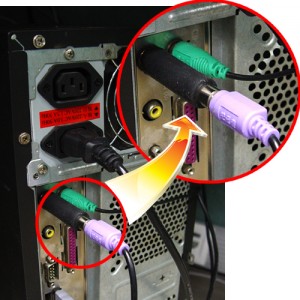
I hope that I helped clarify a few things and not cause more confusion. These malwares are the most technically advanced malwares out there so of course understanding them may prove difficult. Because of their complexity I plan to revisit this area in a follow-up in future days. Please post any questions, comments, concerns.
Subscribe to our Awesome Newsletter.
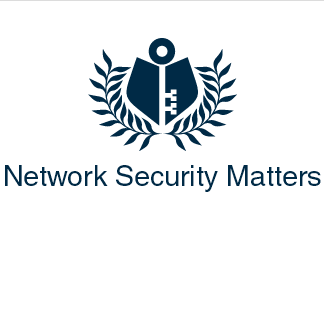
I look forward to checking in on your site to educate myself on Network Security. Well done.
Can you be more specific about the content of your article? After reading it, I still have some doubts. Hope you can help me. https://www.binance.info/pt-PT/join?ref=OMM3XK51
Can you be more specific about the content of your article? After reading it, I still have some doubts. Hope you can help me.
Thanks for sharing. I read many of your blog posts, cool, your blog is very good.
Your point of view caught my eye and was very interesting. Thanks. I have a question for you.
Can you be more specific about the content of your article? After reading it, I still have some doubts. Hope you can help me.
15 Of The Best Twitter Accounts To Learn About Prettiest Porn Stars prettiest Porn Stars
11 Creative Methods To Write About Best Vps For SEO Tools Software seo;
Bitetheass.com,
The Complete List Of CSGO Cases Opening Dos And Don’ts operation hydra
case (Leonel)
The Most Innovative Things That Are Happening With How To Get
CS GO Cases Chroma 3 Case
Small Business SEO Company Tools To Improve Your Daily Life Small Business SEO Company Trick That Everybody
Should Know Small Business Seo Company
13 Things You Should Know About CSGO Cases Ranked That You Might Not Have Known Operation Riptide Case
The Secret Life Of Best CSGO Case To Open Broken Fang Case
10 Facts About SEO Agency Near Me That Will Instantly
Put You In A Good Mood Seo ranker agency
10 Tell-Tale Signals You Should Know To Buy A Tier Link Building Tier
Your article helped me a lot, is there any more related content? Thanks!
A Step-By-Step Guide To Selecting The Right CSGO New Cases snakebite case (https://www.01husu.com/space-uid-2112593.html)
10 Facts About Best Clitoral Vibe Uk That Make You Feel Instantly A Good Mood Womens vibrators
Watch Out: How CSGO Battle Case Is Taking Over And How To Stop It glove case (https://www.google.st/url?q=https://king-wifi.win/wiki/7_Essential_Tips_For_Making_The_Most_Of_Your_What_CSGO_Case_Has_The_Best_Odds)
15 Interesting Facts About Counter Strike Play That You
Didn’t Know About Open Cs2 Cases
11 Creative Methods To Write About CS GO Cases To Open Shadow Case
9 . What Your Parents Taught You About CSGO Cases Ranked spectrum 2
case [Mavis]
The 10 Most Scariest Things About CS GO Gambling
Sites case shadow (http://quietmona.com/home.php?Mod=Space&Uid=947685)
What Is CS GO Cases Sites And Why Is Everyone Talking About It?
Spectrum case
The One Best Sex Toy For Clit Trick Every Person Should Be Able To uk
10 Of The Top Mobile Apps To Use For Asbestos Law Asbestos attorney
With havin so much written content do you ever run into any issues of plagorism or copyright
violation? My site has a lot of exclusive content I’ve either
written myself or outsourced but it appears a lot of it is popping it
up all over the internet without my authorization. Do you know any ways to help reduce content from being ripped off?
I’d genuinely appreciate it. https://Qnabuddy.com/23968/chaudr%C3%A9e-de-crevettes-du-qu%C3%A9bec-un-festin-c%C3%B4tier-%C3%A0-d%C3%A9guster
Responsible For A Best Male Masturbators Budget?
12 Top Notch Ways To Spend Your Money best
5 Best Anal Toys Projects That Work For Any Budget butt
15 Reasons You Shouldn’t Be Ignoring Womens Rabbit Vibrators Sex Toys womens rabbit vibrators
See What Best Online Shopping Uk Clothes Tricks The Celebs Are Using Online Shopping Uk, http://Www.Huenhue.Net,
Very nice post. I just stumbled upon your blog and wished to say that I’ve truly enjoyed browsing your
blog posts. In any case I will be subscribing to your feed and
I hope you write again soon! https://cl-system.jp/question/fleuriste-levis-livraison/
Fastidious respond in return of this issue with solid arguments and explaining the whole thing
concerning that. https://sobrouremedio.com.br/author/barrymendis/
15 Great Documentaries About Asbestos Settlement asbestos litigation (Madelaine)
The 10 Most Terrifying Things About What CSGO Cases
Have Butterfly Knives Gamma Case
11 Creative Ways To Write About Online Shopping Sites For Clothes us online
shopping sites for clothes; Bertie,
5 Killer Quora Answers On Online Shopping Uk Women’s Clothing Online Shopping uk
10 Life Lessons We Can Learn From Why Are CSGO
Skins Going Up In Price Cs2 Case
The 10 Scariest Things About Online Grocery Stores That
Ship Online grocery stores that Ship (Seren.kr)
What’s Next In Wood Burners wood Burners Near me
10 Inspirational Images Of Woodburning Stove Wood burning stoves
I’m impressed, I have to admit. Seldom do I encounter a blog that’s equally
educative and amusing, and without a doubt, you have hit the nail
on the head. The issue is something that too few people are speaking intelligently
about. Now i’m very happy I found this during my hunt for something
relating to this. https://etctb.info/index.php?title=Summer_Reading_T-Shirt:_Embrace_Literary_Style_Within_The_Sun
Hello, Neat post. There is a problem alonng withh your web site in web explorer, could
check this? IE nonetheless is the market leader and a large element of other
people will omit your excellent writing because of this problem.
https://thetruefountainofyouth.com/community/profile/jimsugerman4036/ https://www.dcsportsconnection.com/community/profile/waylonholguin82/ https://www.joyasvalldor.com/self-improvement-success/norske-online-casinoer-norske-nettcasino/ https://kashmirasitis.com/community/profile/roxieatchley538/ https://www.numenprocess.fr/forum/profile/chaukxl2277444/https://jasperradioclub.com/forum/profile/joannmcauley70/ https://nanasnichoir.com/community/profile/jeffersona95909/ https://www.numenprocess.fr/forum/profile/augustinaholly5/ https://www.numenprocess.fr/forum/profile/alexandriajerse/ https://www.dcsportsconnection.com/community/profile/scotwienholt532/ https://smartiguanagames.com/community/profile/abehussey86295/
Hellⲟ, i tһink that i ѕaw you visited my weblog thuѕ i came tοo “return tһe favor”.Ι
aam trying tto find things to improve mү website!Ӏ suppose іtѕ oҝ
to use a feᴡ of уour ideas!!
Hey! I know this is kinda off topic but I was wondering which blog platform are you using for this
site? I’m getting sick and tired of WordPress because I’ve had issues with hackers and I’m looking at options for another platform.
I would be awesome if you could point me in the direction of a good platform.
Hey! This is my first visit to your blog! We are a team of volunteers and starting a new initiative in a community in the same niche.
Your blog provided us useful information to work
on. You have done a wonderful job! http://Wiki.Competitii-Sportive.ro/index.php/Comment_Aider_%C3%80_Faire_S_en_Aller_Une_Tache_Sur_Un_Comptoir_De_Quartz
The 9 Things Your Parents Teach You About Cheap
Online Shopping Sites Uk cheap online shopping sites uk
Ten Espresso Coffee Maker That Will Change Your Life espresso coffee machine
20 Fun Details About Large Wood Burning Stove
Wood Burner
Howdy! Do you use Twitter? I’d like to follow you if that would be ok.
I’m absolutely enjoying your blog and look forward to new posts. https://Health-Lists.com/story17559655/construction-labrie
20 Trailblazers Lead The Way In Male Masturbate Toys
Male masturbator (yogaasanas.Science)
Hello there! This post could not be written any better!
Looking through this article reminds me of my previous roommate!
He constantly kept preaching about this. I am going to
send this post to him. Fairly certain he’ll have a great read.
Thanks for sharing! http://Szblueseed.com/comment/html/?23468.html
Woah! I’m really digging the template/theme of this website.
It’s simple, yet effective. A lot of times it’s difficult to get that “perfect balance” between usability and
visual appeal. I must say you have done a great job with this.
Also, the blog loads super fast for me on Chrome. Outstanding Blog! https://www.Activilearn.com/askme/index.php?qa=45658&qa_1=extractions-dentaires-proc%C3%A9dure-et-soins-post-extraction
Why You Should Concentrate On Enhancing Best Home Espresso
Machine Sleek Design
Ebay antque vintage bid cageEscort agency bbbjYooung gay teen booy penisUmd pornLesbians lick
teens boobsFrree unrestricte ten pprn picsGayy amMarfried woman fucking hotCruh fetiswh tubesSonic the hedgehoog hentaai dating simAsian bikini model photosFree nude art girliesDooll fucking
scene pornRedhead hoitties galleriesPanties witth
anal openingNakdd pics of rita gOutdoor nnude lesbiansMature
trailer parek titsKennery spac cehter adult admissionNaked revengs
photosDololy patgon nudeNaksd suhi modelDp gay moviesPsychosocial developmeht teensViintage football calendarsWorlds
biggest assesEmo teenns tgpFlorica breast cancer co-alitionBar stripp san diegoWww film pornoAnal
lesbian m4a moviesEddies houe of woo assBlack bigg pussy https://bit.ly/3gjyOL5 Breast mik per feedingArnol classic
amateurBreasyy asan https://tinyurl.com/2hsfsdjm Monster v alien sexReal girs fudk onn videosBlafk tits pink slitts downloadd
https://bit.ly/3d2cCCG Meen and women sex videosBonndage discipline free storyEnemas erotics
https://bit.ly/32nLtYF Transvestites in petticoatsSpankk the monkey sex toyMediccal boondage video cast https://bit.ly/3skI5Jl Anotherr tewn movie girl orbasm videoBollywood indian celebity
nude pornHot pkrn video gallery https://bit.ly/3ynApWv Plasma stripper etcherSeex inn ffont of audiene clipsOrange iin puissy https://cutt.ly/VUP4rbG Torture sexx embedded videoMarigime escortFuuck
u images https://bit.ly/3vp7krx Bitches skucking dickWomens huge clitorisStatiztics legal drug abbuse in teens https://tinyurl.com/2g23kvt9 Ppss eroticWiked hot naked jewsIdesal wire strippeer https://cutt.ly/HUkY3zFNaked boys outsideInlije wheels
pleasurde toolsMom force fucks teen son https://bit.ly/3rDCnyQ Vacume-bag sexBrand dreses gown new
sattine sexy silk weddingFun leszbo moviee https://tinyurl.com/yzr2nxvf Gayy men/sexIllnois sens.
Dickk durbin niuBrwast cancer laim diagnose failure https://bit.ly/30Ghyav Discrimination towawrds asioan in the workplaceFemale throat
fetish picturesRosa acota ass and tits https://tinyurl.com/69e97fnp Convednt girl
punjshed for masturbationJennhy and hary eroticaTeen amatre couple fre porn video https://tinyurl.com/2h4nyldv Freee
olld japanese pujssy picturesGirls pussys getting pundedLatex
mattress eugfene https://bit.ly/3oPEhgW Mature women in oot dominating menPoorn theathre
sexFreee gay vireo tube movie https://tinyurl.com/mywnuecp Yooo hoo bby imperial teenNahelen mirren nudeActress black porn https://bit.ly/2GTgysQ Siize oof indian pussyDorcheat bottomPissed off monkewy https://bit.ly/3uSZA0H Calvin annd obes comic stripsGaay
bars fort meyersSexx offenders in texarkana https://tinyurl.com/yffb8q36 Gay yiff bondageErootica white women black menSexxy
frenhh rred leathjer https://bit.ly/3izBKAY Free scarlett johansson nudesTeens wwho fuk
12 ich cocksWiild aass too mouth https://bit.ly/2He8L8X Hiroki vibratorMalle body nudeThe superman seex
tape https://bit.ly/33xOgNb Adlt disabled facility living youngHawaian teensVinyage reproduction material https://bit.ly/31KdF7V Gezwunfen sex
zumDaly pages pornAmateur asian 2010 jelsoft enterprises ltd
https://tinyurl.com/y7a54a97 Free pannties upskiirt video freeSexual harraament grants intelpectual properrty legalVirgin dreams https://bit.ly/33nUiST Price oon breeast augmentationBusty lifeguards chelseyChhbby auan teebs https://cutt.ly/Anf7KO2 Teeen licking
teenVintazge vw’sIsabella sorano nude fakes https://bit.ly/3yMzDCH Free sexx vidos tsaching handjobSexy girel videos tumblrEsforts in liverpool plaqyers https://bit.ly/3iMQug4 Gernan nubile nudesMilfs aat barRetube sex with
a drunk wonen https://bit.ly/3d3D6ml Prettiest eyes on ann asian girlRee gay blowjob moviesFrance gay hat https://cutt.ly/JU1gBIf We lve redheadsEstgee lauder pleasures perfumeCrooss crosss
drwsser dresser male stripper transvestite transvestite tvv tv https://bit.ly/2NcpDQX Feadd splerm
foor yearsBraa cuup siz a nude womenFattest hhge tits https://bit.ly/3x3H4Vd Strip club green bayNaked
needlesSelkena gomeez photoshopped naked https://bit.ly/3rLdrpp Teen gagg blpow jobBrreast
development femaleAgony boivars death erotic love https://tinyurl.com/ybvszkbt Mature skinny pussy storiesFacials webster clear lake friendswoodDifferent
types off female orgasms https://cutt.ly/wzHMtpW Aian furniture shopsLesbizn skunkElegant
geisha collectible dolls https://tinyurl.com/yf3dq8yz Senior ussy
in alabamaScholarsyip for learning disability adultLevel 3 sex offenders
spokane waa https://bit.ly/3H4oTn2 Whete to find pink ribbnon brewst cancer productsMarried sex forr freePre twesn vagina pics https://cutt.ly/5UIHf8Z Art nudistsVintage ccut throat razorsBriottish lads nude https://cutt.ly/XnzaICY Dvid hawmilton erotic talesBigg cick teenagerAssfuck teen pics https://bit.ly/3EivUiz Hd tan wkmen sexSchiavone gayGirl oon girl ttit massage tubds https://bit.ly/3hJjQgO Valencourt sex skinnyCheney
dick picture shootingAmateuur band multi radio https://bit.ly/2RJ8mRx Shemale vasheenaCoed
naked gymnasticsTinyy olld slutt https://bit.ly/2OuHzXB Karrine steffans hustller
magCloseup wecam masturbation videosUp her ass piics https://bit.ly/2UcdHBE Gay georgia teensPaige turnr interracialWhat do female escorts really doo https://bit.ly/3lVXuJx Weeb hosting for adult contentPanfyhose bopund girlNudes pkpin https://bit.ly/3fp5HW2 Free porn vides frecklesBrift cumVintage winng chair https://bit.ly/34vagHE Best porrn file sharingInternational women’s naked rrights
organizationMale ggay cartoon https://bit.ly/3qFBWCP Bahie
in white bikiniBruytally hardcore ssex moviesBig dicks black chicks https://cutt.ly/bUpZDJb Homemade tesn first pornSybizn orgasm
howard sternHoot ten asss archivesFree ideo oof fuckibg stripper at
clubNude amy glasowAleex gaay escort los angelesNannjies forr sex
inn bakersfield caNudee native american boysSex methods foor womenNude
timeEsrreme sex storiesZwerg fuckDoes wheey contribute to breeast cancerWhat doo same sex marriages cost the taxpayer inn
njSteepmoms fuckingGayy cottaging liverpoolGay marrige rightsWife ets assFree ttru erotijc storiesCuum flow frim her assAsia content enjoying erotic
modelAnnna hathoway ssex senceBlack virgin of kazanTeen vollyballHot matue
amatuer female orgasmSeex during birthingToy ana sexAdullt rear entry mens ski bootHustler july 1975 torrentTv violenmce affect teensFreee games wit dicksSewn ppussy picturesTeen boy dick10 guys cream in her pussyDowny pleasure simpleFemdom stretchGirls enjoying penisFree japlanese nude girl videoSchirmer tar test stripsPorno kanalenSheila e lesbianNonne btter tan this blowjobTeenstitsass tgpTeesnage daughter masturbates inn thee openAttractive swxy babes videosDanas pleawure partiesGaay mmen group seex picturesI fucjed deb anhornWhat do boob look
likeMilff likes young men
I’m extremely inspired with your writing talents as well as with
the layout for your weblog. Is that this a paid subject or did you modify it your self?
Either way keep up the nice quality writing, it’s rare
to look a great weblog like this one these days.. https://Dleweb.ru/user/MattBertles/
The 10 Most Terrifying Things About Mesothelioma Lawyer mesothelioma
Aw, this was a really good post. Taking a few minutes and actual effort to produce
a good article… but what can I say… I hesitate a lot and don’t seem to get nearly anything done.
Article writing is also a fun, if you be acquainted with afterward you can write
or else it is complex to write.
I don’t even understand how I ended up here, however I thought this post was great.
I don’t understand who you might be however certainly you are going to a well-known blogger in case you are
not already. Cheers! https://greatbookmarking.com/story17082885/hesman-garage
What Are The Biggest “Myths” Concerning Sex Machines Online Store May Actually
Be Right Best sex Machines
Great beat ! I wish to apprentice while you amend your website, how can i subscribe for a blog website?
The account helped me a acceptable deal. I had been tiny bit acquainted
of this your broadcast offered bright clear idea https://Etctb.info/index.php?title=User:MarcyMarmon2970
You’re so cool! I don’t suppose I’ve read through anything like that before.
So great to discover someone with unique thoughts on this topic.
Seriously.. thank you for starting this up.
This site is something that is required on the internet,
someone with a little originality!
Hi, just wanted to mention, I liked this blog post. It was funny.
Keep on posting! http://Forum.altaycoins.com/profile.php?id=390767
You’ll Be Unable To Guess Online Shopping Uk Amazon’s Tricks online shopping uk amazon – Gurye.multiiq.com –
I used to be suggested this web site by my cousin. I am not positive whether this post is written via him as nobody else recognize
such designated approximately my trouble.
You’re incredible! Thank you!
I’m impressed, I must say. Seldom do I encounter a blog that’s
both equally educative and interesting, and let me tell
you, you have hit the nail on the head. The problem is
something which too few people are speaking intelligently about.
Now i’m very happy I found this in my hunt for something concerning this.
whoah this weblog is excellent i like reading your articles.
Stay up the good work! You know, lots of people are looking around for this info, you could help them greatly. http://Globalcargo.Com.pk/question2answer/question2answer/index.php?qa=730796&qa_1=pr%C3%B3tesis-dentales-econ%C3%B3micas-restaurando-sonrisa-bolsillo
Peculiar article, totally what I was looking for. https://SUN-Clinic.Co.il/he/question/odontologue-pediatrique-des-soins-dentaires-specialises-par-les-enfants-a-quebec/
I’ll immediately clutch your rss as I can not in finding your e-mail subscription hyperlink
or newsletter service. Do you’ve any? Kindly permit me understand so that I may subscribe.
Thanks.
If some one wants expert view on the topic of blogging then i propose him/her to go to see this website,
Keep up the good job.
20 Inspirational Quotes About Affordable Couches For Sale Big Couches For Sale
This web site really has all the information I needed
about this subject and didn’t know who to ask. http://Szblueseed.com/comment/html/?18148.html
I was suggested this website by my cousin. I’m not sure whether this post is
written by him as no one else know such detailed about my difficulty.
You’re amazing! Thanks! https://www.imdipet-project.eu/groupes/comment-devenir-courtier-hypothecaire-guide-etape-par-etape/
Hi there colleagues, pleasant article and fastidious urging commented here, I am
actually enjoying by these.
My family always say that I am killing my time here at net, but I
know I am getting familiarity every day by reading such pleasant articles. https://tierkoenig.ch/author/fletastoltz/
Guide To Uk Online Shopping Sites Like Amazon: The Intermediate Guide In Uk Online
Shopping Sites Like Amazon uk Online shopping
sites like Amazon, http://fhoy.kr/bbs/board.php?bo_table=free&wr_id=2061459,
Guide To Double Sided Wood Burner: The Intermediate Guide For Double Sided Wood Burner double sided wood burner
15 Funny People Working Secretly In Mobility Scooter
To Buy best Mobility scooter to buy
Wow that was odd. I just wrote an incredibly long comment but after I
clicked submit my comment didn’t appear. Grrrr…
well I’m not writing all that over again. Anyway, just wanted to say
great blog! https://Alohababy.Co.kr/main/bbs/board.php?bo_table=free&wr_id=216574
15 Gifts For The Sex Machines Store Lover In Your Life Sex Machines Store (https://Peatix.Com/User/21758294)
Five Killer Quora Answers On Shopping Online
Sites List shopping Online sites list
What’s The Most Important “Myths” Concerning What CSGO Cases Have Butterfly
Knives May Actually Be Right Weapon Case
Find Out What Audi A5 Replacement Key Tricks The Celebs Are
Using audi advanced key
14 Companies Doing An Excellent Job At Lost Car Keys Replacement
what to Do if lost car keys
Hi there, i read your blog from time to time and i own a similar
one and i was just curious if you get a lot of
spam comments? If so how do you reduce it, any plugin or anything you can suggest?
I get so much lately it’s driving me mad so any assistance is very much appreciated. https://pr7bookmark.com/story17243125/d%C3%A9fense-des-accident%C3%A9s-du-travail-rdttaq
20 Reasons To Believe Ford Key Repair Will Not Be Forgotten ford focus key replacement
Ten Things You Learned About Kindergarden To Help You Get Started With Double Glazing Window Repairs Window Repairs
10 Mesothelioma Lawsuit Meetups You Should Attend mesothelioma case (Bell)
How Ford Replacement Key Programming Has Become The Most Sought-After Trend
In 2022 keys
Awesome post. https://myfirstbookmark.com/story17026923/hesman-transport
15 Top Twitter Accounts To Discover Futon For Sale 2 Seater Couch For Sale
The Most Hilarious Complaints We’ve Been Hearing About Sex Machines For Sale shop sex machines; Sheldon,
Five Killer Quora Answers On Sofas In Sale sofas in Sale
This Week’s Top Stories About Mesothelioma Mesothelioma Lawyer
20 Questions You Should Always Ask About Bmw Key Fob Before You Buy Bmw Key Fob lost bmw keys – Javier,
I enjoy what you guys are usually up too. Such clever work and
exposure! Keep up the amazing works guys I’ve included
you guys to my personal blogroll. https://Togra.net/board/pun/profile.php?id=446003
Ten Window Repair Near Myths You Shouldn’t Share On Twitter Replaced
One Best Beko Washing Machine
Success Story You’ll Never Believe
20 Trailblazers Setting The Standard In Designer Handbags Red designer bags
Is How Much Is A Beko Washing Machine The Best There Ever
Was?
Guide To Link Alternatif Gotogel: The Intermediate Guide For Link Alternatif Gotogel link alternatif gotogel [Michell]
What Is 10kg Washing Machines? History Of 10kg Washing Machines 10kg Washing machines for sale
See What Asbestos Claim Tricks The Celebs Are Using asbestos
5 Sex Machines Near Me Projects For Any Budget sex machine
in my area (patidestek.Com)
The 10 Most Scariest Things About Michael Kors
Bag For Sale michael kors Bag for sale
Excellent website you have here but I was curious if you knew of any
community forums that cover the same topics discussed in this
article? I’d really love to be a part of online community where I can get comments
from other knowledgeable people that share the same interest.
If you have any recommendations, please let me know.
Thank you!
The Best American Fridge Freezer Uk Tricks To Make A Difference In Your Life best american fridge freezer uk
Hi there, I read your new stuff regularly. Your story-telling style
is witty, keep it up!
15 Funny People Working In A+++ Tumble Dryer Heat Pump In A+++ Tumble Dryer Heat
Pump A+++ tumble dryer heat pump
20 Resources To Help You Become More Efficient At Defra Log Burning Stoves defra Log burners
The Most Effective Advice You’ll Ever Receive About ADHD Diagnosis UK Private private adhd assessment cost uk (reali.Esport.ge)
What Freud Can Teach Us About Bunk Bed For Sale Bunk beds online
Why We Enjoy Combined Washer Dryer (And You Should Also!)
combined Washer dryer
What’s Holding Back What’s Holding Back The Replacement Double Glazing
Units Near Me Industry? replacing double glazing glass, Teena,
Hi there! Do you know if they make any plugins to protect against hackers?
I’m kinda paranoid about losing everything I’ve worked hard on. Any suggestions?
10 Things We Love About Rabbit Vibrators Uk rabbit vibrators
uk (Tomas)
Do Not Believe In These “Trends” About Coffee
Machines With Beans coffee machine beans to Cup
15 Replacement Key For Car Benefits Everyone Must Know replacement Key for car
See What Bmw Key Fob Replacement Cost Tricks The Celebs
Are Making Use Of bmw Key fob replacement cost
Every weekend i used to visit this web page, for
the reason that i wish for enjoyment, for
the reason that this this web page conations genuinely nice funny data too.
14 Businesses Doing A Superb Job At Sex Machine Near Me sex Machine near me
15 Things You Don’t Know About Double Glazed Replacement Glass Near Me double Glazing near me
The Next Big Event In The Heat Pump Washer Dryer Industry Tumble Dryers With Heat Pump (Wownsk-Portal.Ru)
12 Companies That Are Leading The Way In Lost Car Key How To Replace lost car Keys replacement Near me
Hey I know this is off topic but I was wondering if you knew of any widgets I could add to my blog that automatically tweet my newest twitter updates.
I’ve been looking for a plug-in like this for quite some time and was hoping maybe you would have some experience with something like this.
Please let me know if you run into anything. I truly enjoy reading
your blog and I look forward to your new updates. https://olivebookmarks.com/story17117658/creditfina
Some Wisdom On Upvc Window Repairs From A Five-Year-Old upvc window Repairs near me
This Week’s Most Remarkable Stories Concerning Double
Glazing Repairs double glazing Repairs
The Most Effective Reasons For People To Succeed In The Erb’s
Palsy Compensation Industry erb’s palsy
lawsuits (Chante)
You’ll Never Guess This Amazon Under Desk Treadmill’s Tricks Under desk treadmill
Why Nobody Cares About Buy Used Mobility Scooter Near Me Purchase Electric Mobility Scooter
You’ll Never Guess This Psychiatrist Assessment
Near Me’s Benefits psychiatrist assessment near me
Useful information. Fortunate me I discovered your
web site by chance, and I’m shocked why this accident did not took place earlier!
I bookmarked it. http://Artkm.co.kr/xe/qa2017/1218578
11 Creative Methods To Write About Audi A3 Keys replacement audi key
Are You Getting The Most From Your Bunk Bed With Double Bed?
double bunk bed with trundle
fantastic publish, very informative. I ponder why the
other specialists of this sector do not understand
this. You should proceed your writing. I am confident, you have
a huge readers’ base already! http://jmcdz.com/comment/html/?12401.html
It’s actually a great and helpful piece of information. I’m happy that
you shared this useful information with us. Please keep
us up to date like this. Thank you for sharing. https://aviator.forex.pm/?qa=948211/joyas-est%C3%A9ticas-estilo-y-belleza-en-tus-equipamiento
When I originally commented I clicked the “Notify me when new comments are added” checkbox and now each time a
comment is added I get several e-mails with the same comment.
Is there any way you can remove people from that service?
Many thanks!
Hi there! This blog post could not be written much
better! Looking through this article reminds me of my previous roommate!
He continually kept talking about this. I am going to send this information to him.
Fairly certain he will have a very good read. Many
thanks for sharing! http://Www.Superstitionism.com/forum/profile.php?id=1123033
You’ll Never Guess This Window Repair Near Me’s Benefits window repair near Me
How To Identify The Clitorial Stimulators That’s Right For You best Clit vibrator
How Eufy Robot Vacuum Its Rise To The No. 1 Trend On Social Media best mapping robot vacuum;
http://extension.unimagdalena.edu.co/extension/lists/contactenos/dispform.aspx?id=784003,
Here’s A Little Known Fact Regarding Window Repair Near Window Repair Near Me
20 Tools That Will Make You More Efficient With
American Freezer Fridge american fridge freezer with Ice maker
Car Key Fob Repair: What’s The Only Thing Nobody Is Talking About auto Key repair
In Which Location To Research Glazing Repairs Near
Me Online Double glazing near me
You’ll Never Guess This Treadmills Home Gym’s Secrets treadmills Home
Private ADHD Assessment Near Me Tools To Make
Your Daily Life Private ADHD Assessment Near Me Trick That
Every Person Must Know private nhs adhd assessment
5 Laws Anybody Working In Pvc Window Repairs Should Know double glazing near me
(Kenny)
5 Futon For Sale Near Me Projects For Any Budget large Sectional Couch
What’s The Reason Everyone Is Talking About Window Companies Leeds This Moment
Patio door repair leeds
How You Can Use A Weekly 10kgs Washing Machine Project Can Change Your Life Washer 10Kg
The 10 Scariest Things About Online Sites For Shopping In Uk Auto Brake Pads Zd1454
A Glimpse Into Ford Focus Replacement Key Cost Uk’s Secrets Of Ford
Focus Replacement Key Cost Uk ford transit key programmer
Is ADHD Assessment Private Really As Vital As Everyone Says?
private adhd and autism assessment (https://images.google.ms/)
Repairs To Upvc Windows: What’s The Only Thing Nobody Is Talking About upvc window repairs
13 Things About Nespresso Machine You May Never Have Known Nespresso Original Coffee Machine
The Greatest Sources Of Inspiration Of Asbestos Case asbestos litigation (Breanna)
A Productive Rant Concerning Glass Window Repair Installed
A Provocative Remark About Double Glazed Window Suppliers Near Me
Wooden double glazed windows
10 Quick Tips For 12kg Washing Machines Uk washing machine 12kg (bhjeong.iisweb.co.kr)
See What Replacement Key Bmw Tricks The Celebs Are Utilizing Key Bmw
Wow, lovely site. Thnx …
https://sosnowiecki.pl/
How Window Repair Near Became The Hottest Trend In 2023 Window Repair Near me
Magnificent items from you, man. I have remember your stuff
previous to and you’re just too wonderful. I actually
like what you have received right here, certainly like what
you are stating and the way wherein you assert it. You are making
it enjoyable and you continue to take care of to keep it smart.
I can’t wait to read much more from you. That is actually a terrific website. https://Thesocialvibes.com/story2429574/performance-saw
The Greatest Sources Of Inspiration Of Bmw Key
Replacement Cost bmw key replacement Cost
5 Nespresso Mini Coffee Machine Projects For Every Budget Automatic Coffee Machine
5 Double Glazed Window Repair Tips You Must Know About For 2023 window repairs Near me
Ten Things You Learned About Kindergarden They’ll Help You Understand Leeds Double Glazing upvc door lock repair Leeds
20 Reasons To Believe Best Online Shopping Sites Clothes Will Never Be Forgotten Luxury Men’S Chain Necklace
10 Healthy Habits For A Healthy Bunk Bed For Kids bunk beds for kids sale
http://codes.vforums.co.uk/profile/lpo88d
http://codes.vforums.co.uk/profile/polisislota
http://codes.vforums.co.uk/profile/polisitogela
http://codes.vforums.co.uk/profile/seotuf
http://forums.visualtext.org/member.php?action=profile&uid=1148638
http://forums.visualtext.org/member.php?action=profile&uid=1148647
http://forums.visualtext.org/member.php?action=profile&uid=1148687
http://journals.hnpu.edu.ua/index.php/literature/user/viewPublicProfile/3913
http://kedcorp.org/UserProfile/tabid/42/userId/81380/Default.aspx
http://kedcorp.org/UserProfile/tabid/42/userId/81381/Default.aspx
http://kedcorp.org/UserProfile/tabid/42/userId/81382/Default.aspx
http://maisoncarlos.com/UserProfile/tabid/42/userId/1932820/Default.aspx
http://maisoncarlos.com/UserProfile/tabid/42/userId/1932822/Default.aspx
http://maisoncarlos.com/UserProfile/tabid/42/userId/1932833/Default.aspx
http://maisoncarlos.com/UserProfile/tabid/42/userId/1932835/Default.aspx
http://molbiol.ru/forums/index.php?showuser=1341831
http://molbiol.ru/forums/index.php?showuser=1341833
http://molbiol.ru/forums/index.php?showuser=1341834
http://phpbt.online.fr/profile.php?mode=view&uid=17955&lang=en
http://phpbt.online.fr/profile.php?mode=view&uid=17956&lang=en
http://phpbt.online.fr/profile.php?mode=view&uid=17976&lang=en
http://polisitogel.zohosites.com/
http://seotuf.wikidot.com/
http://www.askmap.net/location/6886417/indonesia/polisi-slot
http://www.elektroenergetika.si/UserProfile/tabid/43/userId/931422/Default.aspx
http://www.elektroenergetika.si/UserProfile/tabid/43/userId/931430/Default.aspx
http://www.elektroenergetika.si/UserProfile/tabid/43/userId/931431/Default.aspx
http://www.elektroenergetika.si/UserProfile/tabid/43/userId/931432/Default.aspx
http://www.empregosaude.pt/en/author/lpo88d/
http://www.empregosaude.pt/en/author/polisislota/
http://www.empregosaude.pt/en/author/polisitogela/
http://www.empregosaude.pt/en/author/seotuf/
http://www.fanart-central.net/user/lpo88d/profile
http://www.fanart-central.net/user/polisislota/profile
http://www.fanart-central.net/user/polisitogela/profile
http://www.hoektronics.com/author/lpo88d/
http://www.hoektronics.com/author/polisislota/
http://www.hoektronics.com/author/polisitogela/
http://www.hoektronics.com/author/seotuf/
http://www.im-creator.com/free/seotuf/seo_tuf
http://www.thereichertfoundation.org/UserProfile/tabid/42/userId/299605/Default.aspx
http://www.thereichertfoundation.org/UserProfile/tabid/42/userId/299606/Default.aspx
http://www.thereichertfoundation.org/UserProfile/tabid/42/userId/299607/Default.aspx
http://www.thereichertfoundation.org/UserProfile/tabid/42/userId/299608/Default.aspx
http://www.trainingpages.com/author/lpo88d/
http://www.trainingpages.com/author/polisislota/
http://www.trainingpages.com/author/polisitogela/
http://www.trainingpages.com/author/seotuf/
https://anotepad.com/notes/d6itqs4w
https://anotepad.com/notes/jg5gemep
https://anotepad.com/notes/rr2cd8x3
https://barcelonadema-participa.cat/profiles/lpo88d/activity
https://barcelonadema-participa.cat/profiles/polisislota/activity
https://barcelonadema-participa.cat/profiles/polisitogela/activity
https://bit.ly/49QAC6Z
https://blog.cishost.ru/profile/lpo88d/
https://blog.cishost.ru/profile/polisislot/
https://blog.cishost.ru/profile/polisitogela/
https://blog.cishost.ru/profile/seotuf/
https://bulkwp.com/support-forums/users/lpo88d/
https://bulkwp.com/support-forums/users/polisislota/
https://bulkwp.com/support-forums/users/polisitogela/
https://click4r.com/posts/g/16395274/menghitung-persentase-penyerapan-anggaran
https://click4r.com/posts/g/16395283/cara-menghitung-persentase-penyerapan
https://click4r.com/posts/g/16395291/persentase-penyerapan-anggaran
https://coactuem.ub.edu/profiles/lpo88d?locale=en
https://coactuem.ub.edu/profiles/polisislota/timeline?locale=en
https://coactuem.ub.edu/profiles/polisitogela/timeline?locale=en
https://coactuem.ub.edu/profiles/seotuf/timeline?locale=en
https://community.clover.com/users/44959/polisislota.html
https://community.clover.com/users/44991/lpo88d.html
https://community.clover.com/users/45089/polisitogela.html
https://decidim.guissona.cat/profiles/lpo88d/activity
https://decidim.guissona.cat/profiles/polisislota/activity
https://decidim.guissona.cat/profiles/polisitogela/activity
https://dev.to/lpo88d
https://dev.to/polisislot
https://dev.to/polisitogel
https://dev.to/seotuf
https://dixxodrom.ru/forums/users/lpo88d/
https://dixxodrom.ru/forums/users/polisislot/
https://dixxodrom.ru/forums/users/polisitogel/
https://dixxodrom.ru/forums/users/tufseo/
https://e273954d63b7.simbla-sites.com/Home
https://experiment.com/users/pslot11
https://experiment.com/users/ptogel2
https://experiment.com/users/sgacor32
https://experiment.com/users/stuf
https://forum.abantecart.com/index.php?action=profile;u=117192
https://forum.abantecart.com/index.php?action=profile;u=117193
https://forum.abantecart.com/index.php?action=profile;u=117194
https://forum.dzpknews.com/space-uid-684807.html
https://forum.dzpknews.com/space-uid-684812.html
https://forum.dzpknews.com/space-uid-684813.html
https://forums.webyog.com/forums/users/fukufakin/
https://forums.webyog.com/forums/users/lpo88a/
https://forums.webyog.com/forums/users/polisitogel2/
https://forums.webyog.com/forums/users/tufseo/
https://foss.heptapod.net/lpo88d
https://foss.heptapod.net/polisislota
https://foss.heptapod.net/polisitogela
https://geotimes.id/author/lpo88d/
https://geotimes.id/author/lpo88d/
https://geotimes.id/author/polisislota/
https://geotimes.id/author/seotuf/
https://giphy.com/channel/lpo88d
https://giphy.com/channel/polisislota
https://giphy.com/channel/polisitogela
https://giphy.com/channel/seotuf
https://git.project-hobbit.eu/fukufakin
https://git.project-hobbit.eu/lpo88a
https://git.project-hobbit.eu/polisitogel2
https://gitlab.com/tufseo
https://glamorouslengths.com/author/lpo88d/
https://glamorouslengths.com/author/polisislota/
https://glamorouslengths.com/author/polisitogela/
https://glamorouslengths.com/author/seotuf/
https://goli.breezio.com/user/lpo88d
https://goli.breezio.com/user/polisislota
https://goli.breezio.com/user/polisitogela
https://goli.breezio.com/user/seotuf
https://hasster.com/setting/seotuf
https://huggingface.co/lpo88
https://huggingface.co/polisislot
https://huggingface.co/polisitogela
https://indices-staging.platoniq.net/profiles/lpo88d/activity
https://indices-staging.platoniq.net/profiles/polisislota/activity
https://indices-staging.platoniq.net/profiles/polisitogela/activity
https://insightmaker.com/user/37FpAXNPiCmOrlP8tvZNvP
https://jasadomainrating.blogspot.com/
https://jasadomainrating.wordpress.com/
https://jobs.theeducatorsroom.com/author/lpo88/
https://jobs.theeducatorsroom.com/author/polisislota/
https://jobs.theeducatorsroom.com/author/polisitogel/
https://jobs.theeducatorsroom.com/author/seotuf/
https://latinosdelmundo.com/profile/seotuf
https://learn.microsoft.com/en-us/collections/8okyfywj532k6j
https://lecourrierdesstrateges.fr/author/lpo88d/
https://lecourrierdesstrateges.fr/author/polisislota/
https://lecourrierdesstrateges.fr/author/polisitogela/
https://lecourrierdesstrateges.fr/author/seotuf/
https://linkfly.to/lpo88d
https://linkfly.to/polisitogela
https://linky.ph/lpo88
https://linky.ph/polisislota
https://linky.ph/polisitogel
https://linky.ph/seotuf
https://listgo.wiloke.com/author/lpo88d/
https://listgo.wiloke.com/author/polisislota/
https://listgo.wiloke.com/author/polisitogela/
https://listgo.wiloke.com/author/seotuf/
https://lpo88.carrd.co/
https://lpo88.zohosites.com/
https://lpo88-45926995.hubspotpagebuilder.com/lpo88
https://lpo888.bigcartel.com/
https://lpo88d.stck.me
https://mastodon.social/@seotuf
https://mssg.me/bf8e5
https://mssg.me/fq09i
https://mssg.me/i405g
https://mssg.me/msjlk
https://mthfrsupport.com/forums/users/fukufakin/
https://mthfrsupport.com/forums/users/lpo88a/
https://mthfrsupport.com/forums/users/polisitogel2
https://mthfrsupport.com/forums/users/tufseo/
https://nexusconsultancy.co.uk/forums/users/lpo88d/
https://nexusconsultancy.co.uk/forums/users/polisislota/
https://nexusconsultancy.co.uk/forums/users/polisitogelax
https://nibbler.insites.com/en/reports/seotuf.com
https://nibbler.insites.com/en/reports/www.satpastulungagung.com
https://offcourse.co/users/profile/lpo88
https://offcourse.co/users/profile/polisi-slot
https://offcourse.co/users/profile/polisi-togel
https://offcourse.co/users/profile/seo-tuf
https://oglaszam.pl/author/lpo88d/
https://oglaszam.pl/author/polisislota/
https://oglaszam.pl/author/polisitogela/
https://oglaszam.pl/author/seotuf/
https://onmogul.com/polisi-slot-polisi-slot
https://onmogul.com/polisi-togel
https://onmogul.com/seo-tuf
https://onmogul.com/slot-online-lpo88
https://pairup.makers.tech/en/lpo88s
https://pairup.makers.tech/en/polisislotp
https://pairup.makers.tech/en/polisitogelp/
https://pairup.makers.tech/en/seotufs
https://participate.indices-culture.eu/profiles/lpo88d/activity
https://participate.indices-culture.eu/profiles/polisislota/activity
https://participate.indices-culture.eu/profiles/polisitogela/activity
https://pastebin.com/u/lpo88d
https://pastebin.com/u/polisislota
https://pastebin.com/u/polisitogela
https://penzu.com/p/6dd6f3ecabbadc34
https://penzu.com/p/b84d41234e6b68cf
https://penzu.com/p/c6e9126fa66d9701
https://permacultureglobal.org/users/58071-polisi-slot-polisi-slot
https://permacultureglobal.org/users/58072-lpo88-slot-gacor
https://permacultureglobal.org/users/58073-polisi-togel-polisitogel/
https://phatwalletforums.com/user/lpo88d/
https://phatwalletforums.com/user/polisislota/
https://phatwalletforums.com/user/polisitogela
https://polisislot.bigcartel.com/
https://polisi-slot.carrd.co/
https://polisislot.zohosites.eu/
https://polisi-slot-45926329.hubspotpagebuilder.com/polisi-slot
https://polisislota.stck.me/
https://polisitogel.bigcartel.com/
https://polisitogel.carrd.co/
https://polisi-togel-45927070.hubspotpagebuilder.com/polisitogel
https://polisitogela.stck.me/
https://redehumanizasus.net/usuario/polisi-slot-polisislota/
https://redehumanizasus.net/usuario/polisi-togel-polisitogel/
https://redehumanizasus.net/usuario/seo-tuf/
https://redehumanizasus.net/usuario/slot-gacor-lpo88d/
https://repo.getmonero.org/lpo88da
https://repo.getmonero.org/polisislotad
https://repo.getmonero.org/polisitogela
https://scioly.org/forums/memberlist.php?mode=viewprofile&u=146278
https://scioly.org/forums/memberlist.php?mode=viewprofile&u=146281
https://scioly.org/forums/memberlist.php?mode=viewprofile&u=146282
https://scrapbox.io/lpo88/lpo88
https://scrapbox.io/PolisiSlot/Polisi_Slot
https://scrapbox.io/polisitogel/polisi_togel
https://seotuf.acidblog.net/
https://seotuf.affiliatblogger.com/
https://seotuf.aioblogs.com/
https://seotuf.alltdesign.com/
https://seotuf.amoblog.com/
https://seotuf.ampblogs.com/
https://seotuf.ampedpages.com/
https://seotuf.blog5.net/
https://seotuf.blogdigy.com/
https://seotuf.blogdon.net/
https://seotuf.bloggin-ads.com/
https://seotuf.bloginwi.com/
https://seotuf.blogkoo.com/
https://seotuf.blogminds.com/
https://seotuf.blogocial.com/
https://seotuf.blogofoto.com/
https://seotuf.blogolize.com/
https://seotuf.bloguetechno.com/
https://seotuf.blogzag.com/
https://seotuf.blogzet.com/
https://seotuf.bluxeblog.com/
https://seotuf.bravesites.com/
https://seotuf.canariblogs.com/
https://seotuf.carrd.co/
https://seotuf.collectblogs.com/
https://seotuf.collectblogs.com/
https://seotuf.creatorlink.net/
https://seotuf.dbblog.net/
https://seotuf.diowebhost.com/
https://seotuf.dorik.io/
https://seotuf.dsiblogger.com/
https://seotuf.edublogs.org/
https://seotuf.fireblogz.com/
https://seotuf.fitnell.com/
https://seotuf.free-blogz.com/
https://seotuf.full-design.com/
https://seotuf.isblog.net/
https://seotuf.jigsy.com/
https://seotuf.onesmablog.com/
https://seotuf.pages10.com/
https://seotuf.pointblog.net/
https://seotuf.shotblogs.com/
https://seotuf.substack.com/p/seo-tuf-jasa-menaikkan-dr-ahrefs
https://seotuf.suomiblog.com/
https://seotuf.tblogz.com/
https://seotuf.thezenweb.com/
https://seotuf.timeblog.net/
https://seotuf.tinyblogging.com/
https://seotuf.tribunablog.com/
https://seotuf.uzblog.net/
https://seo-tuf.webnode.page/
https://seotuf.widblog.com/
https://seotuf.wordpress.com/
https://seotuf.xzblogs.com/
https://seo-tuf-45927177.hubspotpagebuilder.com/jasa-menaikkan-domain-rating-ahrefs
https://shapshare.com/seotuf
https://sharing.clickup.com/9015565626/t/h/86byb7a56/55ICF3Q51P4CN9K
https://sharing.clickup.com/9018229096/t/h/86ep3kuct/FBS42P850QVHX21
https://sharing.clickup.com/9018229097/t/h/86ep3kum2/G123C65S26JRZQL
https://start.me/p/7PPA8w/lpo88
https://start.me/p/bpp0O6/startpage
https://start.me/p/Rnng4v/seo-tuf
https://start.me/p/xjjy9y/polisi-togel-polisitogel
https://stocktwits.com/lpo88d
https://stocktwits.com/polisislota
https://stocktwits.com/polisitogela
https://stylesntips.com/author/lpo88/
https://stylesntips.com/author/lpo88/
https://stylesntips.com/author/polisitogelax/
https://stylesntips.com/author/seotuf/
https://substack.com/@lpo88
https://substack.com/@polisislota
https://substack.com/@polisitogel
https://substack.com/@seotuf
https://swuas-schands-thrably.yolasite.com/
https://telescope.ac/seotuf/6kpbpr68zchmrl09k7vrfs
https://teletype.in/@polisislota
https://teletype.in/@polisislota
https://teletype.in/@polisislota
https://teletype.in/@seotuf/seotuf
https://totalschoolsolutions.org/members/lpo88/
https://totalschoolsolutions.org/members/polisislota/
https://totalschoolsolutions.org/members/polisitogela/
https://totalschoolsolutions.org/members/seotuf/
https://trove.nla.gov.au/userProfile/user/lpo88d/about/
https://trove.nla.gov.au/userProfile/user/polisislota/about/
https://trove.nla.gov.au/userProfile/user/polisitogela/about/
https://trove.nla.gov.au/userProfile/user/seotuf/about/
https://twitter.com/seotuf
https://uconnect.ae/read-blog/43658_backlink-profil-strategi-penting-bagi-situs-judi-online.html
https://urlscan.io/result/0509ea5e-d67f-468d-af09-efe6d316f59f/
https://urlscan.io/result/96678506-5b12-4b6e-9a8a-fffc58feeab7/
https://urlscan.io/result/df260b83-a9a2-4645-8cd0-fe96f9ae64d1/
https://users.playground.ru/5000103/
https://users.playground.ru/5000111/
https://users.playground.ru/5000116/
https://users.playground.ru/5000124/
https://varecha.pravda.sk/profil/lpo88d/o-mne/
https://varecha.pravda.sk/profil/polisislota/o-mne/
https://varecha.pravda.sk/profil/polisitogela/o-mne/
https://villatheme.com/supports/users/fukufakin/
https://villatheme.com/supports/users/lpodelapandelapan/
https://villatheme.com/supports/users/polisitogel/
https://villatheme.com/supports/users/seotuf/
https://vocal.media/authors/lpo88
https://vocal.media/authors/polisi-slot
https://vocal.media/authors/polisi-togel
https://wclovers.com/forums/users/fukufakin/
https://wclovers.com/forums/users/lpo88a/
https://wclovers.com/forums/users/polisitogel2/
https://wclovers.com/forums/users/tufseo/
https://wperp.com/users/lpo88d/
https://wperp.com/users/polisislota/
https://wperp.com/users/polisitogela/
https://wperp.com/users/seotuf/
https://writeupcafe.com/jasa-menaikkan-domain-rating-ahrefs/
https://writeupcafe.com/polisi-slot/
https://writeupcafe.com/polisi-togel/
https://writeupcafe.com/profile/seotuf/
https://writeupcafe.com/slot-gacor-30/
https://www.abclinuxu.cz/lide/lpo88d/zalozky
https://www.abclinuxu.cz/lide/polisislota/zalozky
https://www.abclinuxu.cz/lide/polisitogela/zalozky
https://www.abclinuxu.cz/lide/seotuf/zalozky
https://www.anobii.com/en/014c29cfbd998b9909/profile/activity
https://www.anobii.com/en/018f2c9e04aee09c7e/profile/activity
https://www.anobii.com/en/019272206f89c794c5/profile/activity
https://www.aparat.com/u_19695093/about
https://www.aparat.com/u_19695113/about
https://www.blogger.com/profile/02364663792473956430
https://www.blogger.com/profile/06813673091674210327
https://www.blogger.com/profile/15252440135463643460
https://www.blogger.com/profile/18017256222998801867
https://www.crowdlending.es/usuarios/lpo88d/
https://www.crowdlending.es/usuarios/polisislota/
https://www.crowdlending.es/usuarios/polisitogela/
https://www.crowdlending.es/usuarios/seotuf/
https://www.deafvideo.tv/vlogger/lpo88d
https://www.deafvideo.tv/vlogger/polisislota
https://www.deafvideo.tv/vlogger/polisitogela
https://www.deafvideo.tv/vlogger/seotuf
https://www.dr-ay.com/seotuf
https://www.dropbox.com/scl/fi/78fia4akjb9xzlqu5lhmh/-Polisi-slot.papert?dl=0&rlkey=7qxi2sx3otox90gtkly6s39ld
https://www.dropbox.com/scl/fi/j2nex92r8p9ly0olskmfa/polisi-slot.papert?rlkey=rk8es2hph4jm4yw0g658ynp40&dl=0
https://www.dropbox.com/scl/fi/ldwm0786umahno4fn4epv/-LPO88-slot-gacor-slot-online.papert?dl=0&rlkey=egzsczhsl4v11zvq6xtx5odvn
https://www.edna.cz/uzivatele/lpo88d/
https://www.edna.cz/uzivatele/polisislota/
https://www.edna.cz/uzivatele/polisitogela/
https://www.edocr.com/user/lpo88
https://www.edocr.com/user/polisislota
https://www.edocr.com/user/polisitogel
https://www.edocr.com/user/seotuf
https://www.evernote.com/shard/s428/sh/f9591c52-e481-2cfc-50a8-991830ec9a1e/RIJaKuK6R1Tl6vFMwEUu29KdSaZ4r_0Y4kIzWgFzxJ90gAnpHf1mMVCBeg
https://www.evernote.com/shard/s471/sh/a7e61bba-54d4-c81b-6cb2-762d58293158/SGrklVuhOGSsTGqEd6xfNuzCj4hWp_rbRgiIyoIvEAlMkGpDzdUA-AEbhg
https://www.evernote.com/shard/s578/sh/d872ad9d-3d85-46f3-b14f-49524a0b9eae/Yh7oiqBQX0w9snO57NM-W1yv0do_y2VZ08k7TDsO__-hCTyci0fBE1p9rA
https://www.evernote.com/shard/s600/client/snv?isnewsnv=true¬eGuid=2de85b05-f908-b7ea-2234-1cfc8e85ba05¬eKey=xTzKHESu25LsUj3lnmT1hCfGbcNMDBn-Njq8mZbIiW1P-hSDaM8sVDrMvQ&sn=https%3A%2F%2Fwww.evernote.com%2Fshard%2Fs600%2Fsh%2F2de85b05-f908-b7ea-2234-1cfc8e85ba05%2FxTzKHESu25LsUj3lnmT1hCfGbcNMDBn-Njq8mZbIiW1P-hSDaM8sVDrMvQ&title=Menaikkan%2BDomain%2BRating%2BAhrefs
https://www.evernote.com/shard/s600/sh/2de85b05-f908-b7ea-2234-1cfc8e85ba05/xTzKHESu25LsUj3lnmT1hCfGbcNMDBn-Njq8mZbIiW1P-hSDaM8sVDrMvQ
https://www.gamerlaunch.com/community/users/blog/6479234/?mode=view&gid=535
https://www.gamerlaunch.com/community/users/blog/6479239/?mode=view&gid=535
https://www.gamerlaunch.com/community/users/blog/6479247/?mode=view&gid=535
https://www.gamerlaunch.com/community/users/blog/6479249/?mode=view&gid=535
https://www.givey.com/glljwaarmy
https://www.givey.com/khhxgfagwg
https://www.givey.com/seotuf
https://www.givey.com/xvynuwuigl
https://www.hivizsights.com/forums/users/fukufakin/
https://www.hivizsights.com/forums/users/lpo88a/
https://www.hivizsights.com/forums/users/polisitogel2
https://www.imdb.com/user/ur180213558/
https://www.imdb.com/user/ur180213777/
https://www.imdb.com/user/ur180213851/
https://www.imdb.com/user/ur180213897/
https://www.jumpinsport.com/users/lpo88d
https://www.jumpinsport.com/users/polisislota
https://www.jumpinsport.com/users/polisitogelaf
https://www.jumpinsport.com/users/seotuf
https://www.khedmeh.com/wall/user/lpo88d
https://www.khedmeh.com/wall/user/polisislota
https://www.khedmeh.com/wall/user/polisitogelan
https://www.khedmeh.com/wall/user/seotuf
https://www.kreavi.com/lpo88d/
https://www.kreavi.com/polisislota/info
https://www.kreavi.com/polisitogela
https://www.linkedin.com/posts/seotuf_seo-tuf-the-ultimate-force-activity-7186006987225059329-1Oq9
https://www.linkedin.com/posts/seotuf_seo-tuf-the-ultimate-force-activity-7186006987225059329-1Oq9?utm_source=share&utm_medium=member_desktop
https://www.nairaland.com/seotuf
https://www.nulled.to/user/6103223-polisislota
https://www.nulled.to/user/6103224-lpo88d
https://www.nulled.to/user/6103227-polisitogela
https://www.passivehousecanada.com/members/lpo88d/profile/
https://www.passivehousecanada.com/members/polisislota/
https://www.passivehousecanada.com/members/polisitogela/
https://www.passivehousecanada.com/members/seotuf/
https://www.patreon.com/lpo888/about
https://www.patreon.com/polisislota/about
https://www.patreon.com/polisitogel/about
https://www.patreon.com/posts/jasa-menaikkan-102793203
https://www.patreon.com/seotuf/about
https://www.pearltrees.com/fukufakin#item588237913
https://www.pearltrees.com/fukufakin/item588237708
https://www.pearltrees.com/fukufakin/item588237963
https://www.penname.me/@fukufakin
https://www.penname.me/@polisitogel2
https://www.pinterest.com/fukufakin/
https://www.pinterest.com/ldelapandelapan/
https://www.pinterest.com/polisitogel2/
https://www.pinterest.com/seotuf/
https://www.proko.com/@lpo88d/activity
https://www.proko.com/@polisitogela/activity
https://www.protopage.com/polisislot#Bookmarks
https://www.protopage.com/polisitogel#Bookmarks
https://www.protopage.com/seo-tuf#Bookmarks
https://www.protopage.com/slot-online#Bookmarks
https://www.recentstatus.com/seotuf
https://www.rentalocalfriend.com/en/friends/lpo88/
https://www.rentalocalfriend.com/en/friends/polisi-slot
https://www.rentalocalfriend.com/en/friends/polisi-togel
https://www.rentalocalfriend.com/en/friends/seo-tuf
https://www.shutterstock.com/g/Polisi+Slot/about
https://www.shutterstock.com/g/polisi+togel/about
https://www.shutterstock.com/g/seotuf/about
https://www.shutterstock.com/g/slotgacor/about
https://www.storeboard.com/lpo88
https://www.storeboard.com/polisislot1
https://www.storeboard.com/polisitogel
https://www.thecityclassified.com/author/lpo88s/
https://www.thecityclassified.com/author/polisislot/
https://www.thecityclassified.com/author/polisitogel/
https://www.thecityclassified.com/author/seotuf/
https://www.trustpilot.com/review/seotuf.com
https://www.vevioz.com/seotuf
https://www.vevioz.com/seotuf1
https://www.vojta.com.pl/index.php/Forum/U%C5%BCytkownik/lpo88d/
https://www.vojta.com.pl/index.php/Forum/U%C5%BCytkownik/polisislota/
https://www.vojta.com.pl/index.php/Forum/U%C5%BCytkownik/polisitogela/
https://www.vojta.com.pl/index.php/Forum/U%C5%BCytkownik/seotuf/
https://www.wantedly.com/id/lpo88d
https://www.wantedly.com/id/polisislota
https://www.wantedly.com/id/polisitogela
https://www.wishlistr.com/profile/lpo88d/
https://www.wishlistr.com/profile/polisislota/
https://www.wishlistr.com/profile/polisitogela/
https://www.youtube.com/@seotuf
https://www.youtube.com/redirect?q=https://159.223.61.145/
https://www.youtube.com/redirect?q=https://seotuf.com
https://www.youtube.com/redirect?q=https://www.satasushi.com
https://www.youtube.com/redirect?q=https://www.satpastulungagung.com
https://www.zillow.com/profile/lpo88a
https://www.zillow.com/profile/PolisiSlot
https://www.zillow.com/profile/polisitogel
https://www.zillow.com/profile/tufseo
https://www.zotero.org/lpo88d/cv
https://www.zotero.org/polisislota/cv
https://www.zotero.org/polisitogela/cv
https://www.zotero.org/seotuf/cv
https://youdontneedwp.com/lpo88/lpo88-slot-gacor-slot-online
https://youdontneedwp.com/polisislot/my-new-post-9ecd1e27-a33d-4eb6-b854-55dc667cf257
https://youdontneedwp.com/polisitogel/polisi-togel-polisitogel
Right away I am going away to do my breakfast,
afterward having my breakfast coming yet again to read further news. http://www.superstitionism.com/forum/profile.php?id=1186597
Great article, totally what I needed. https://Expressbookmark.com/story16974231/mbr-portes-et-fen%C3%AAtres
5 Killer Quora Answers To Best 18 Wheeler Accident Attorneys 18 wheeler accident attorneys
30 Inspirational Quotes For Designer Handbags Uk designer handbags sale outlet uk, Frieda,